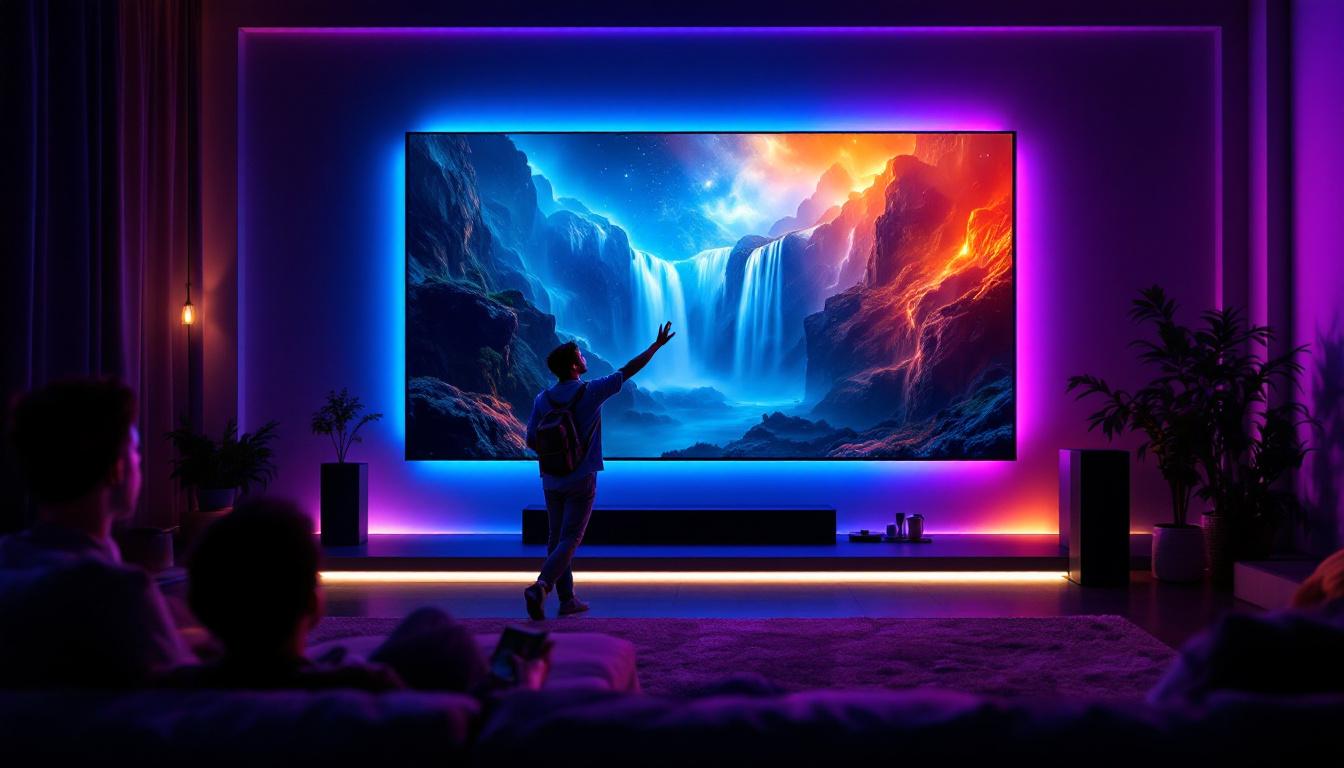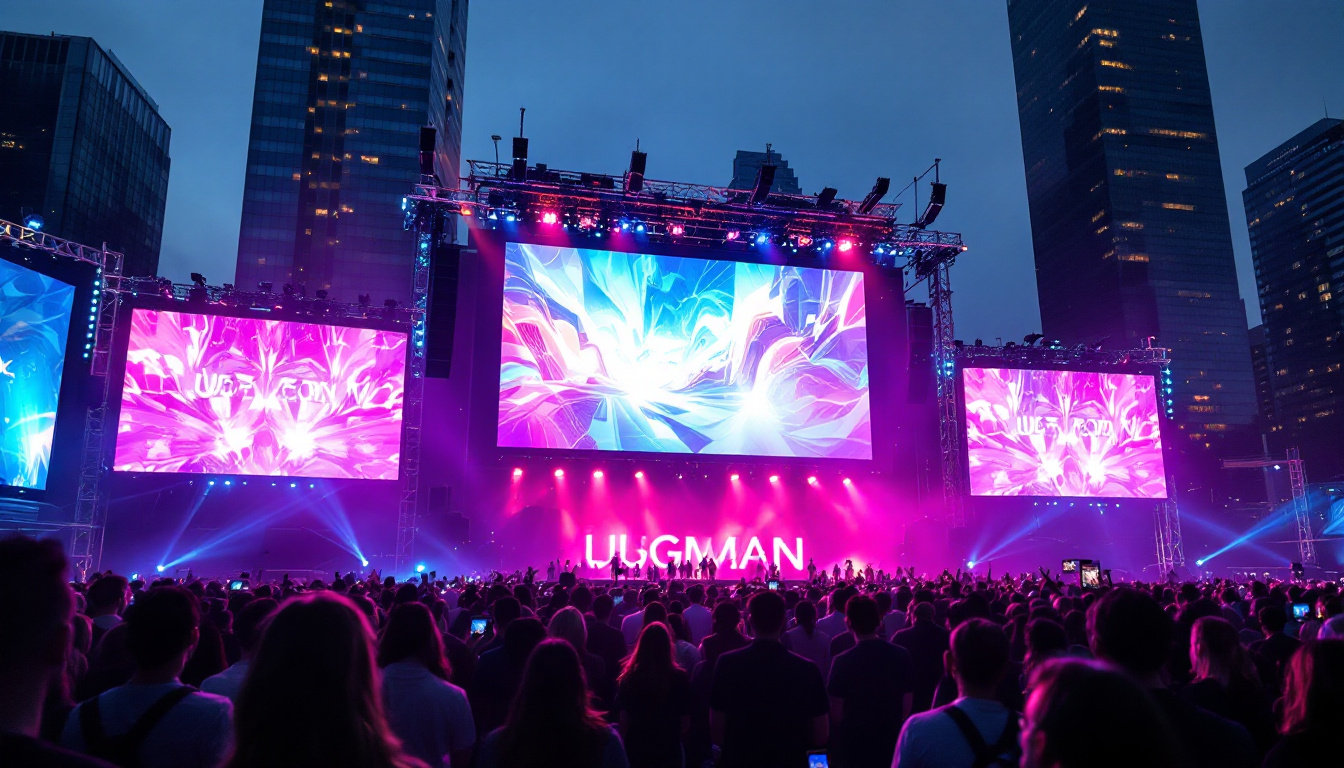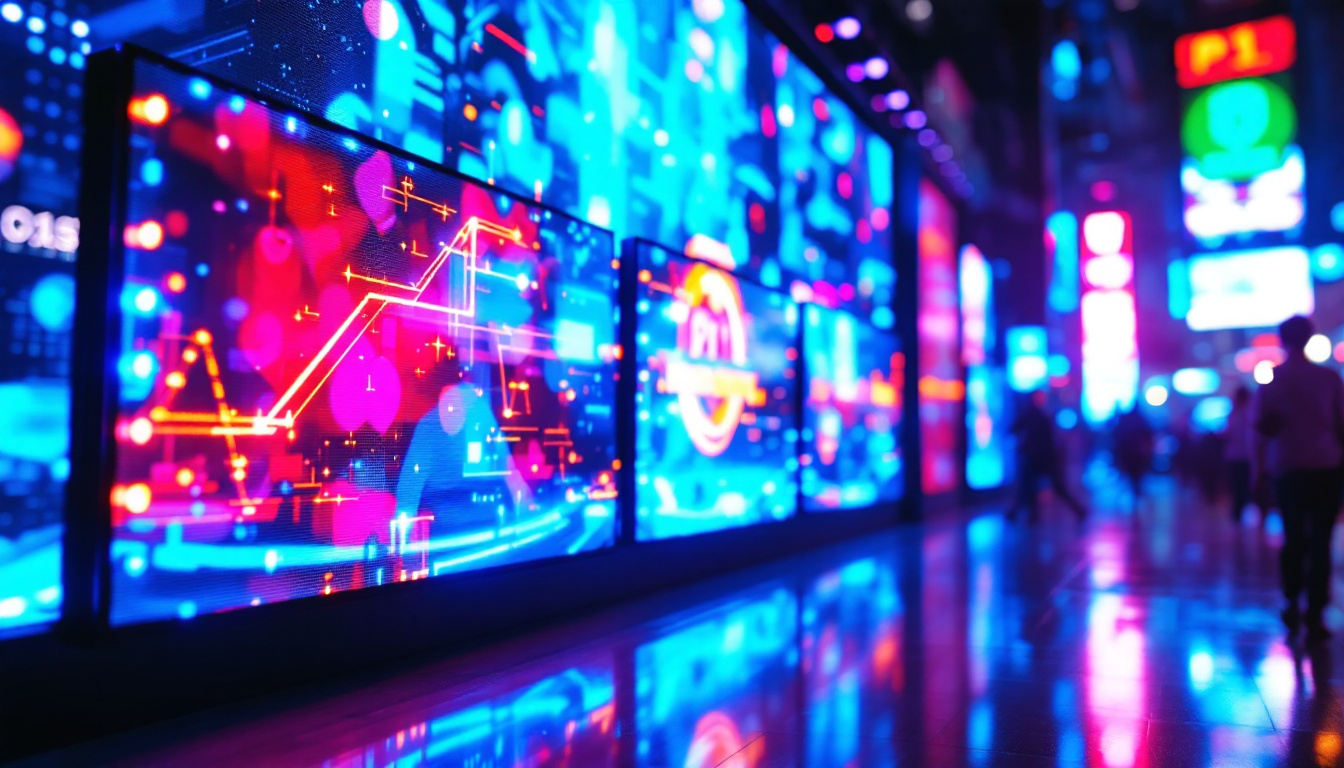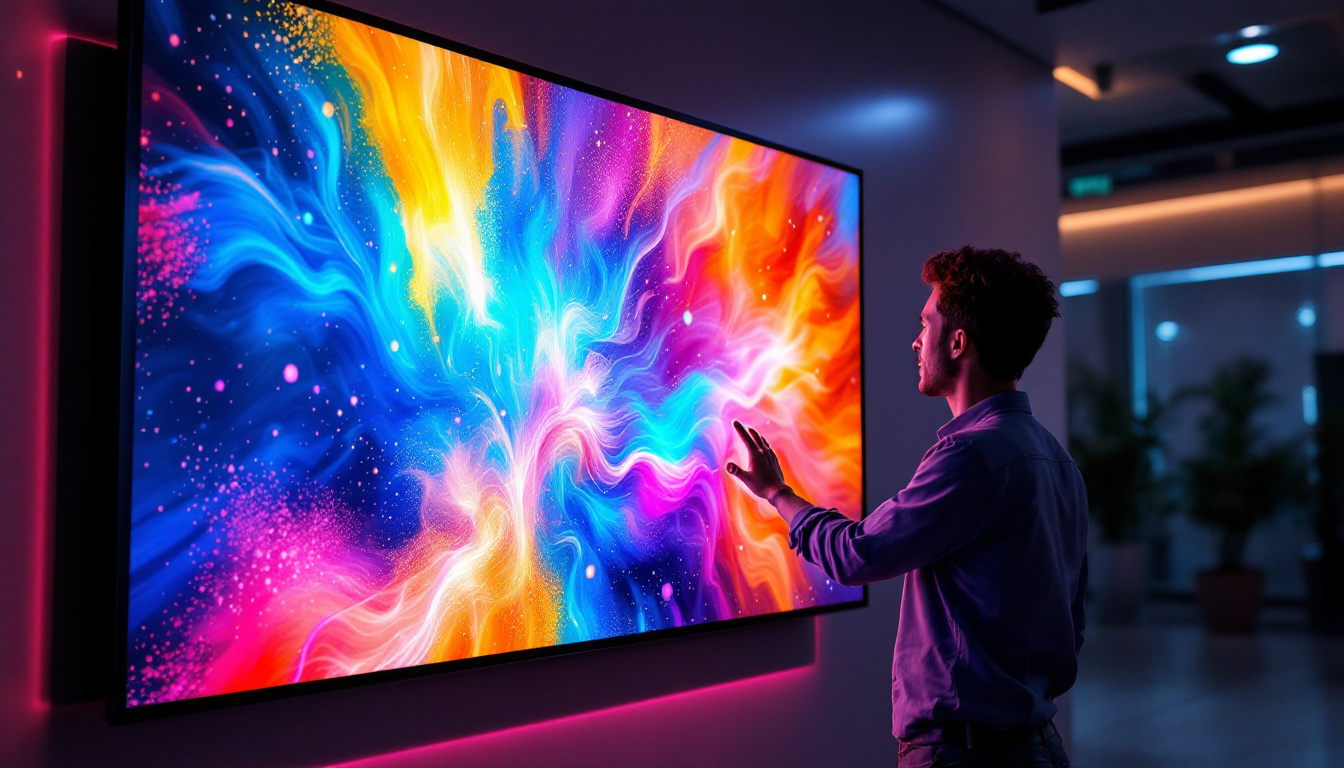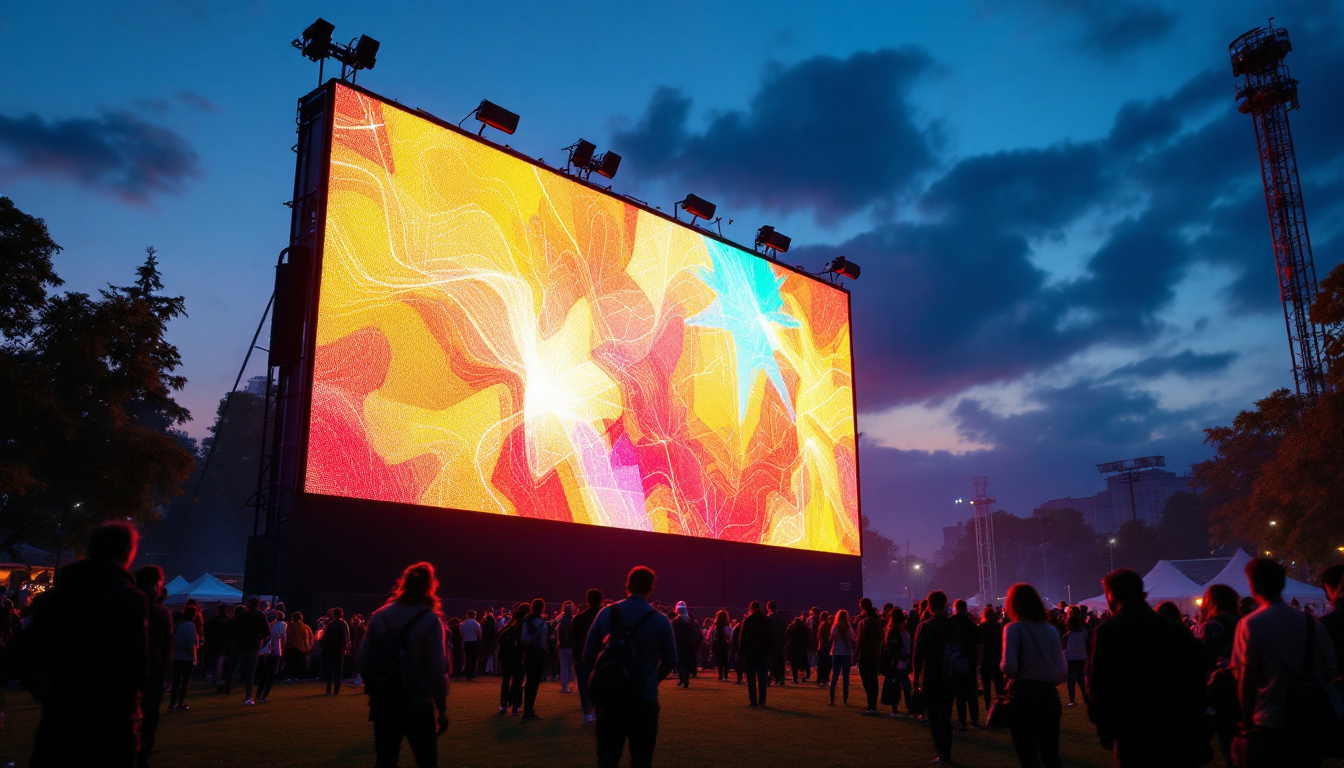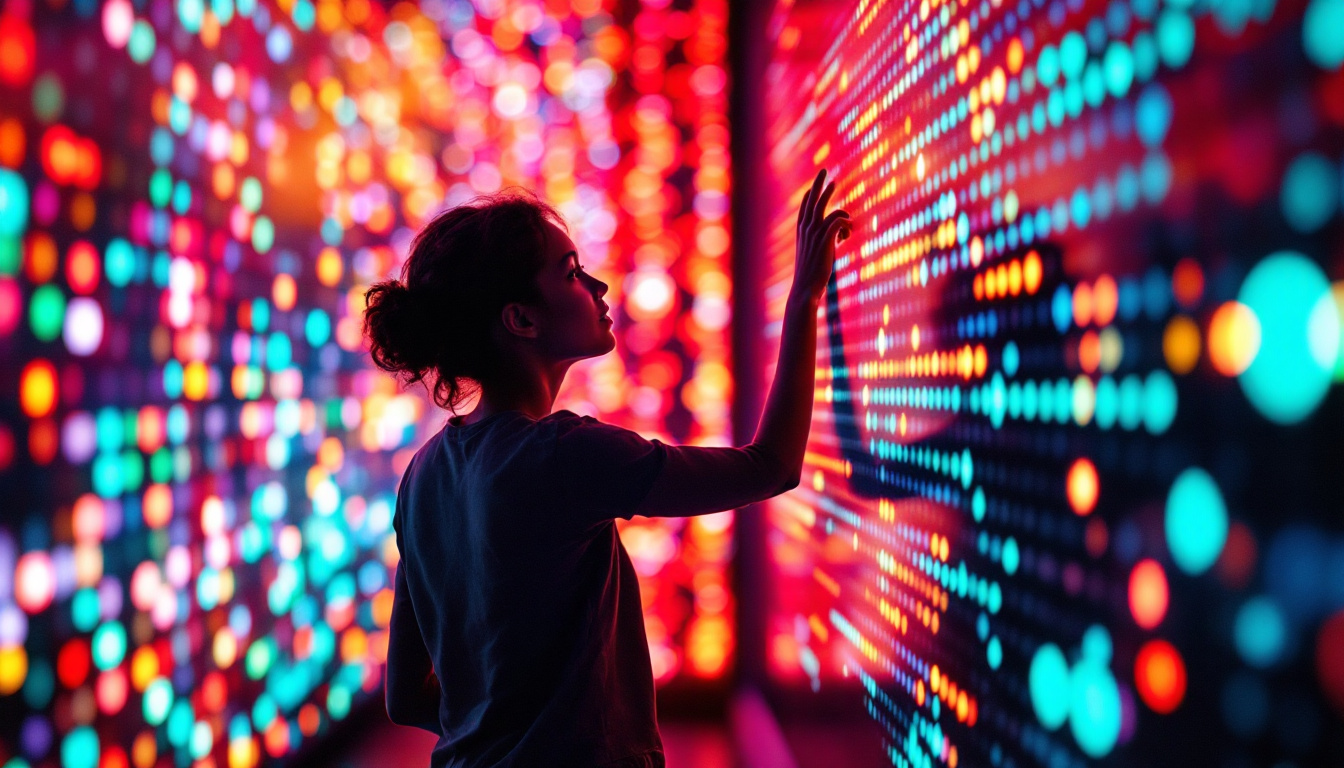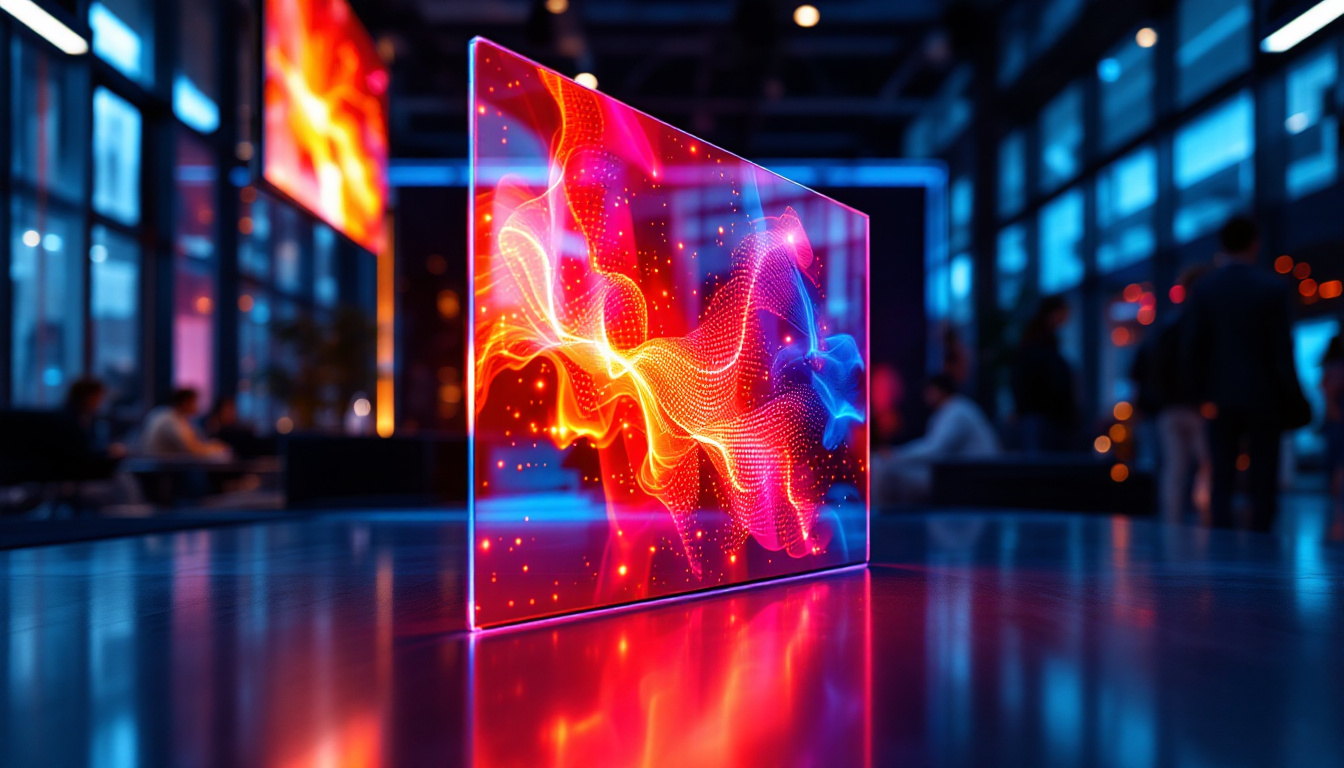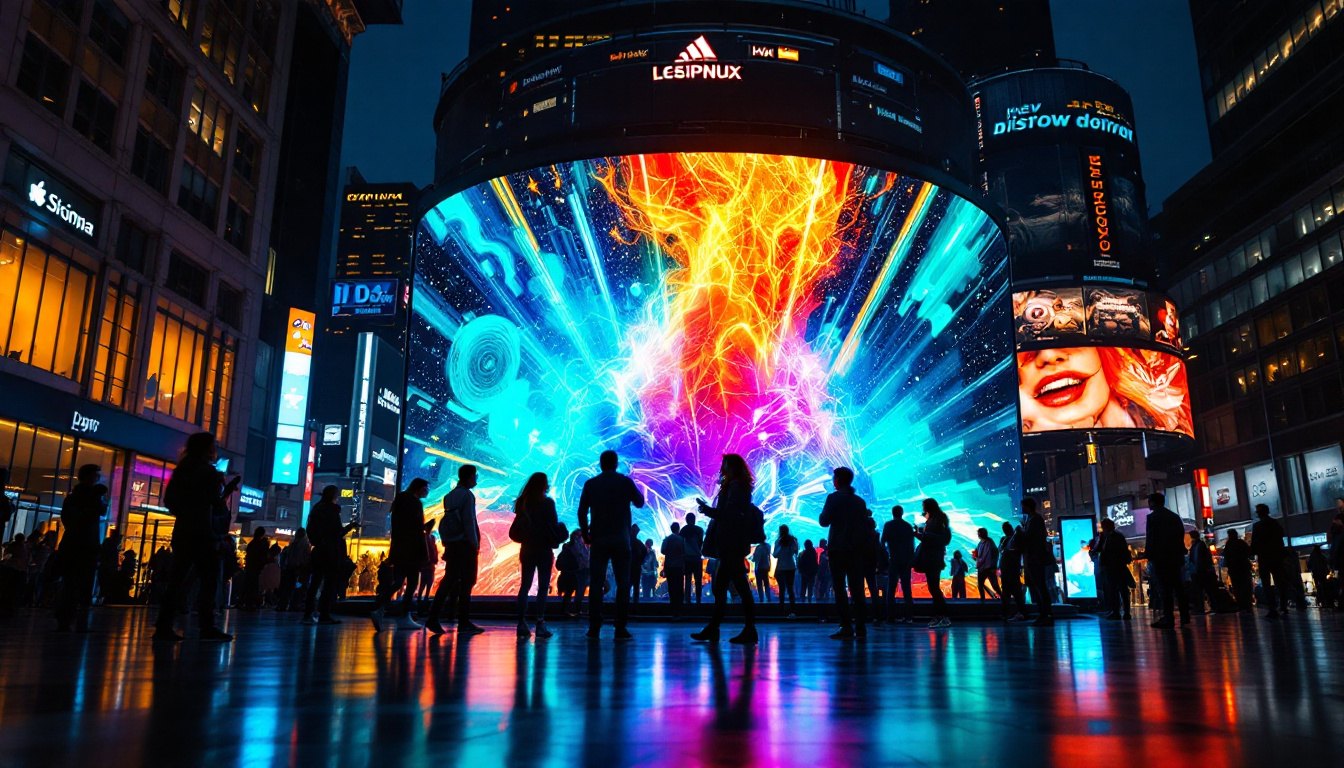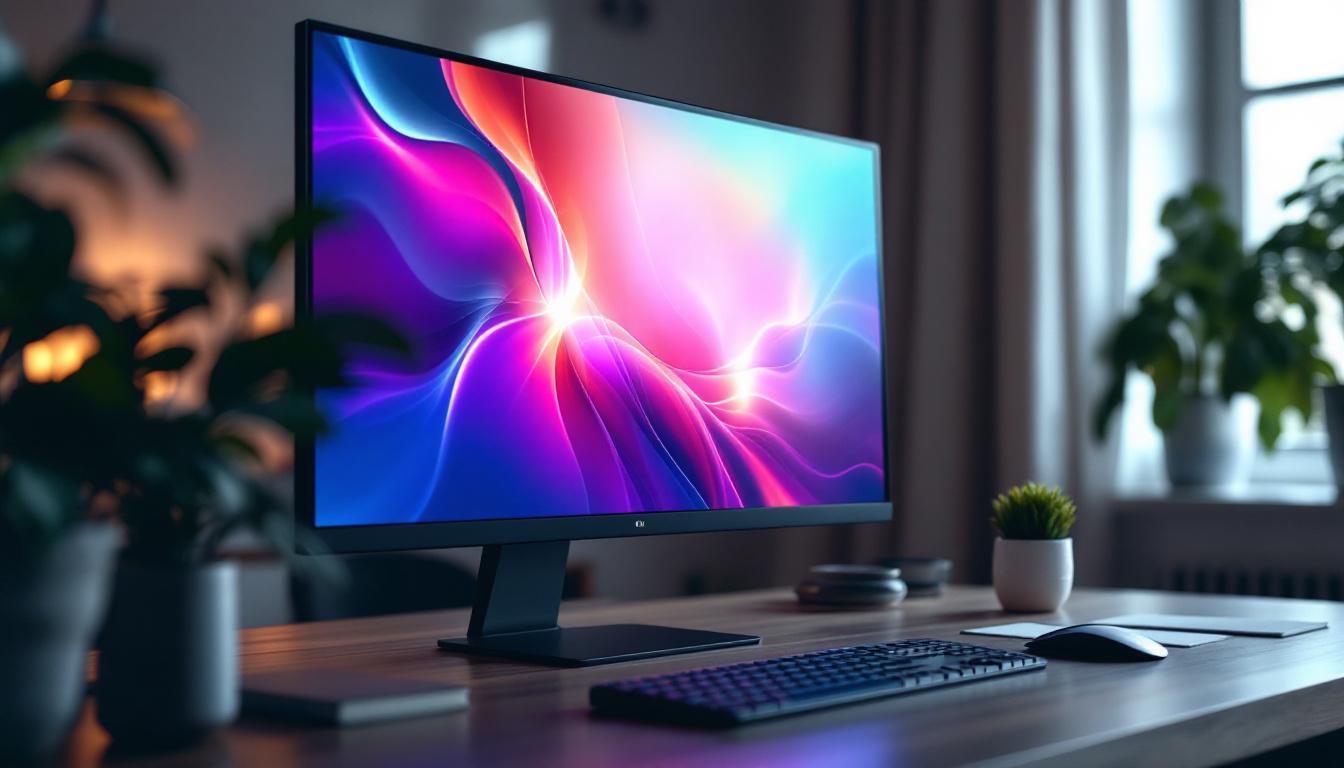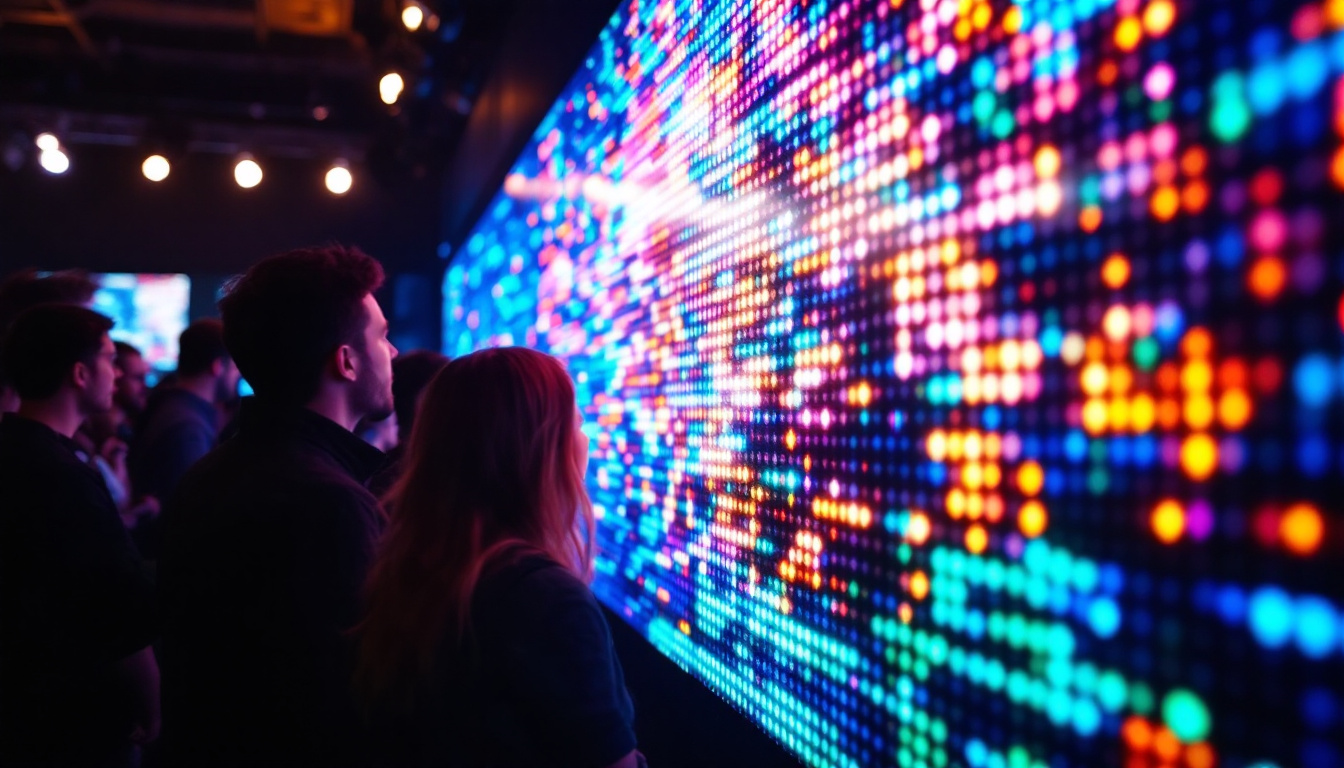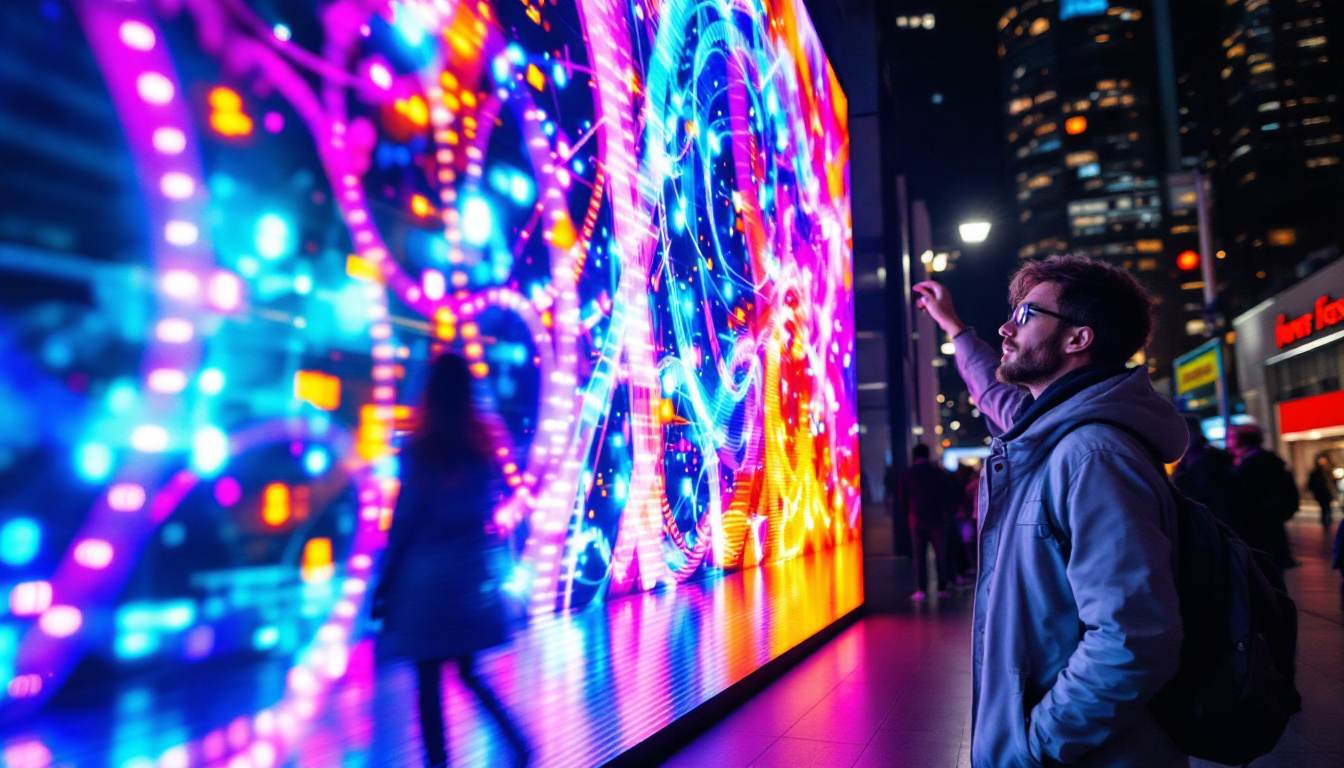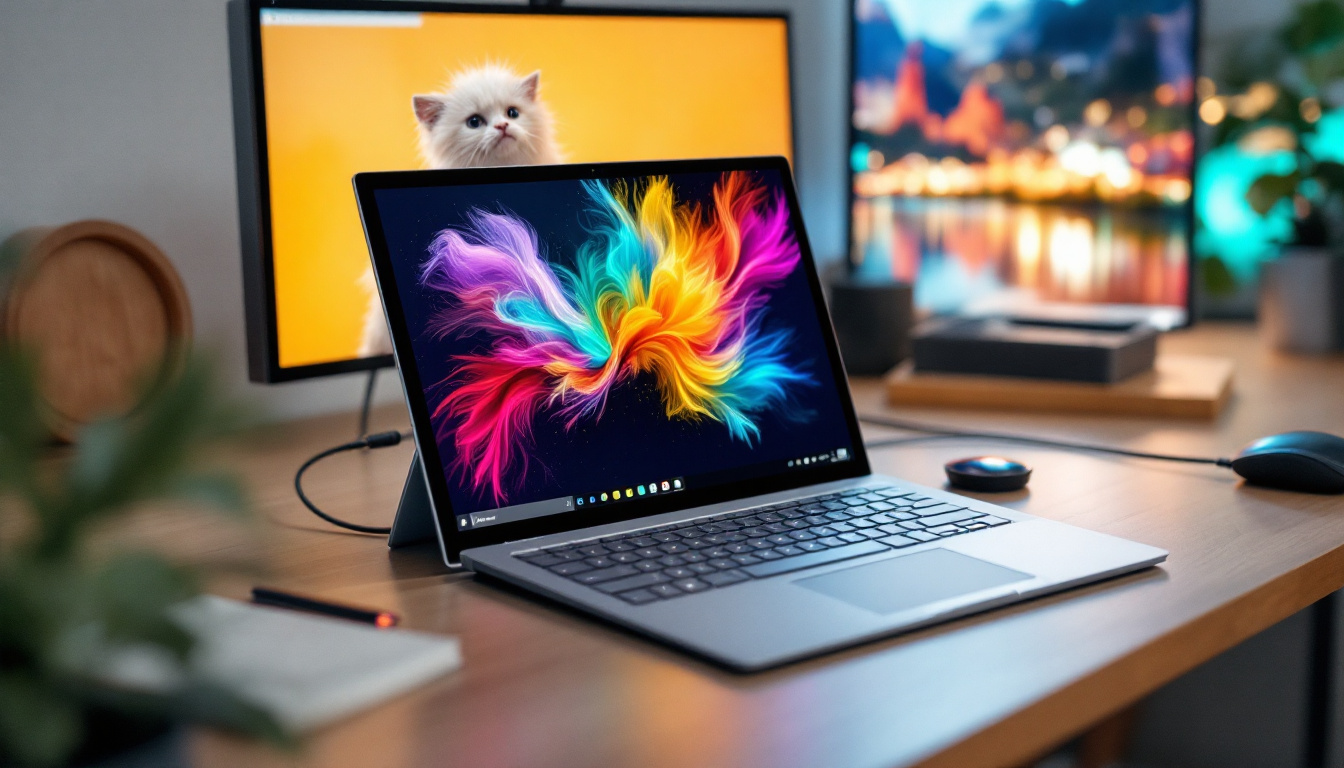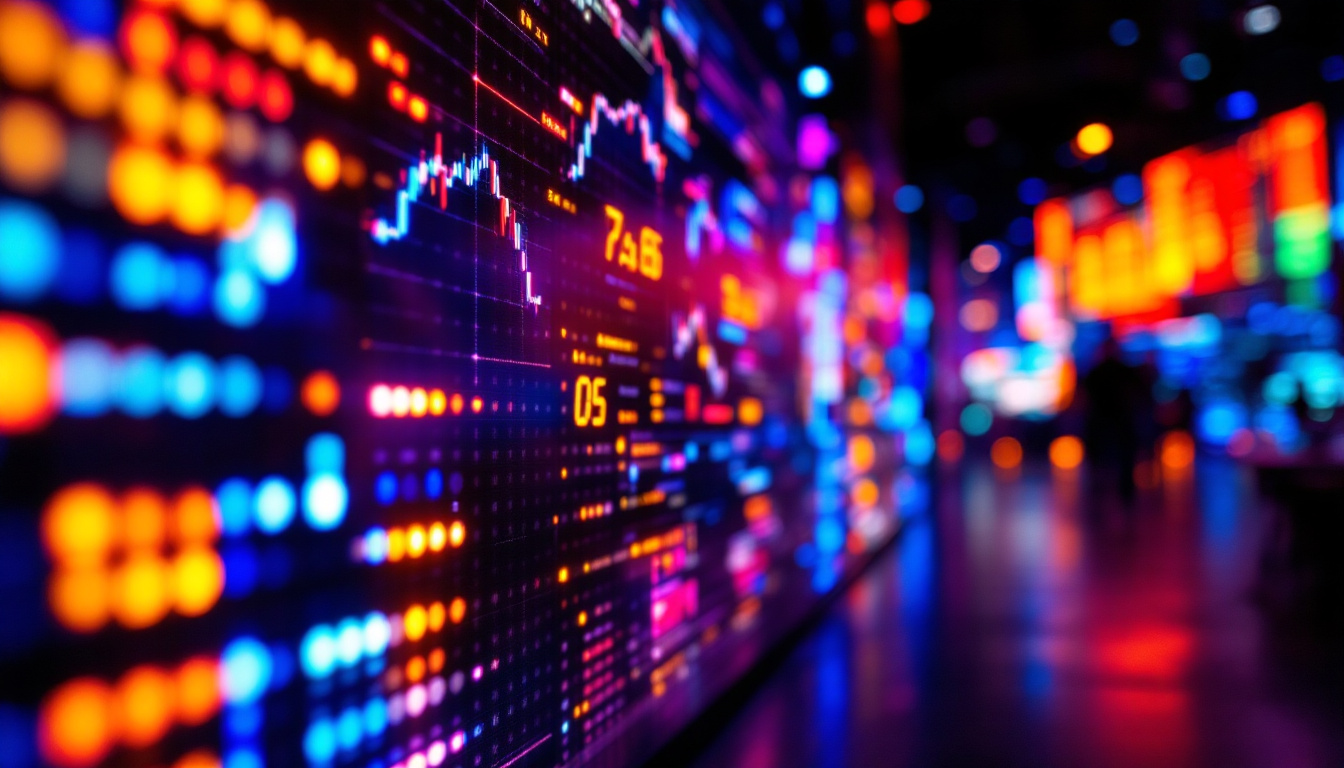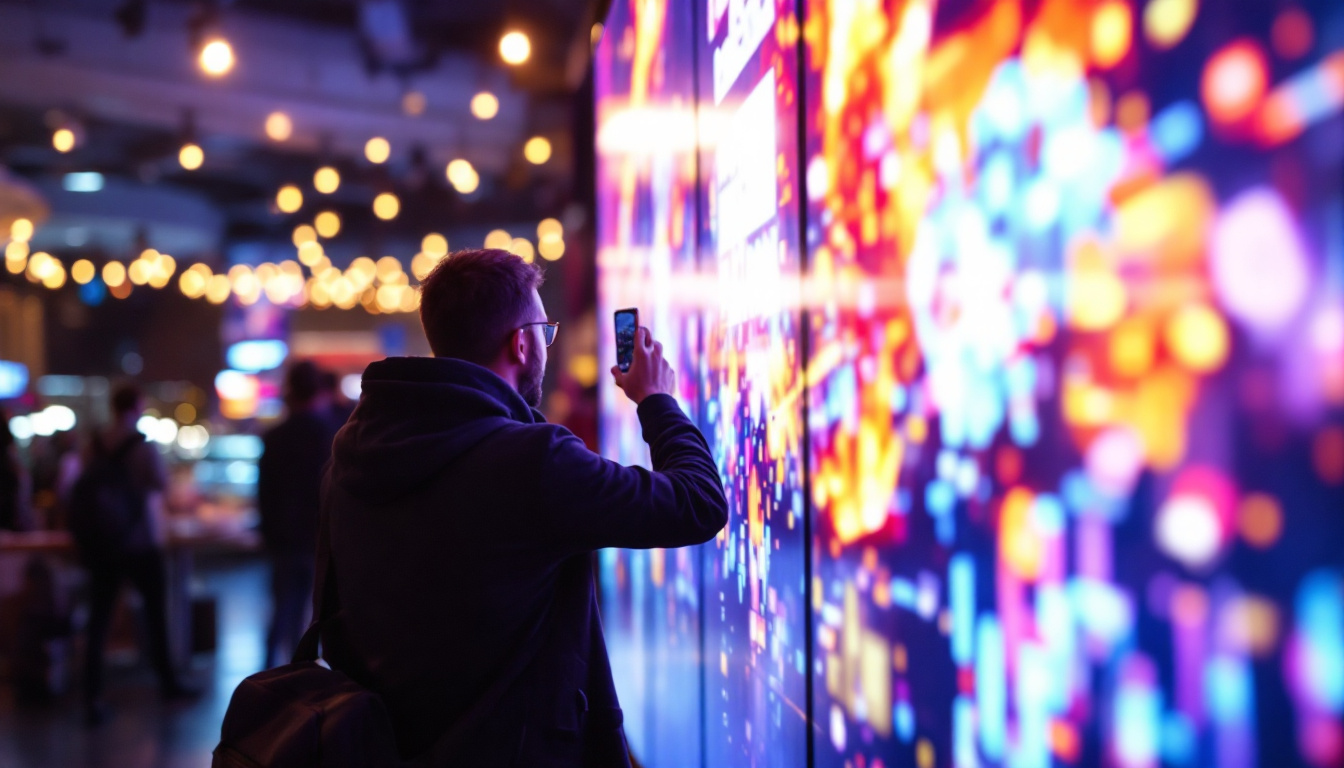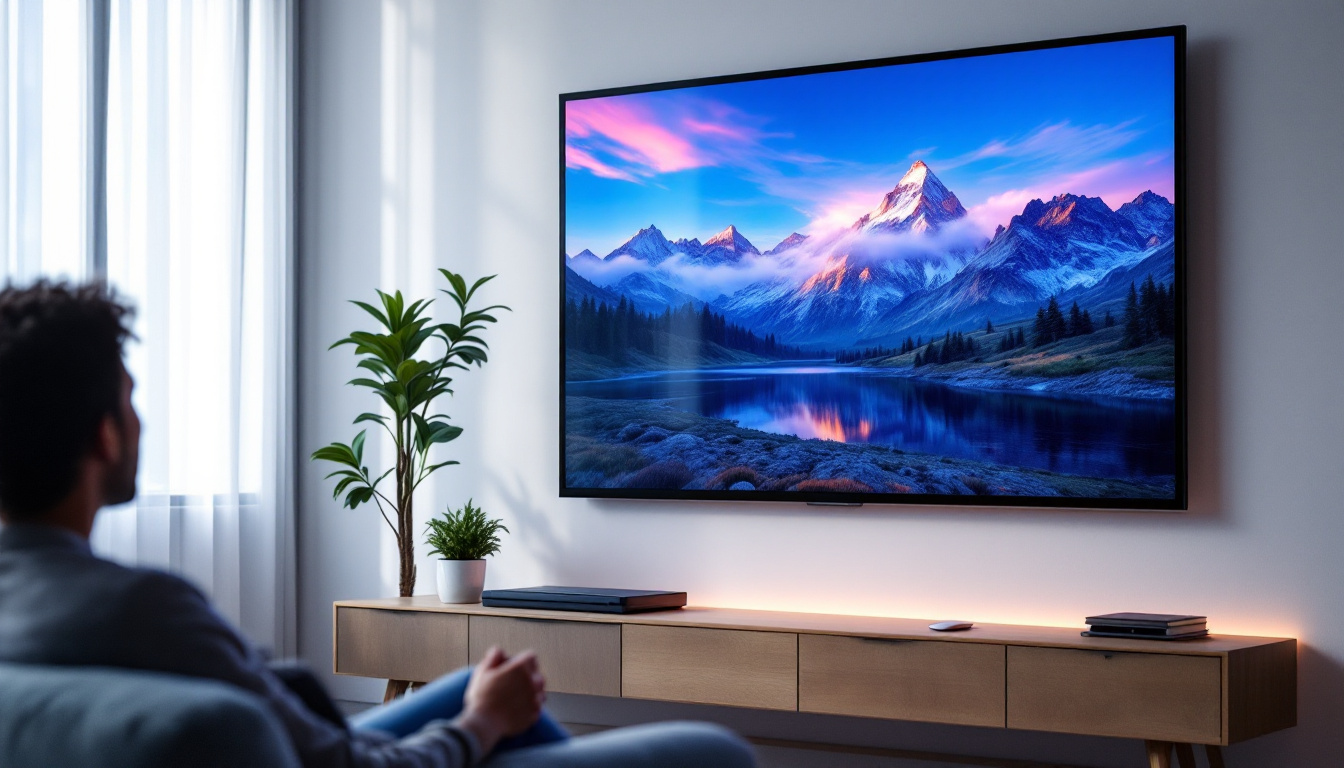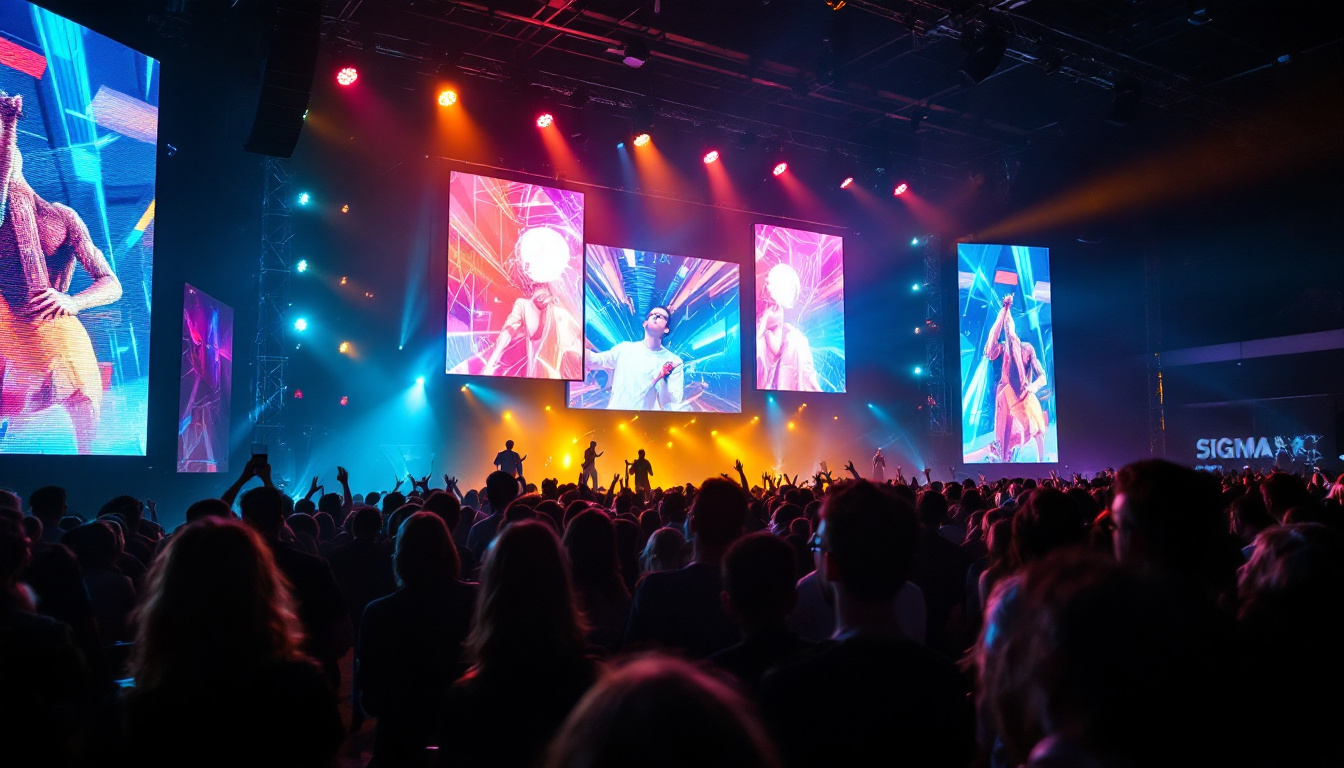In the evolving world of visual technology, LED displays have become a cornerstone for delivering vibrant, high-quality images across various applications. From home theaters to large-scale commercial advertising, understanding the nuances of LED display technology is essential for making informed decisions about projection screens and display solutions. This article delves into the fundamentals of LED displays, explores how they differ from traditional projectors, and highlights their advantages and practical considerations.
Understanding LED Display Technology
LED, or Light Emitting Diode, displays utilize an array of tiny light sources to produce images. Unlike traditional projection screens that rely on an external projector to cast images onto a surface, LED displays are self-illuminating panels composed of millions of individual LEDs. Each LED acts as a pixel, emitting light directly to create bright and vivid images.
The technology has rapidly advanced over the past decade, with improvements in LED brightness, color accuracy, and energy efficiency. Modern LED displays can deliver resolutions ranging from Full HD (1080p) to 8K, catering to diverse needs from casual viewing to professional-grade presentations. This versatility has made LED technology a popular choice not only in homes but also in commercial settings, such as retail environments and corporate offices, where visual impact is crucial for engaging audiences.
How LED Displays Work
At the core of an LED display is a matrix of red, green, and blue LEDs. By varying the intensity of these three primary colors, the display can produce a full spectrum of colors. Each pixel is made up of these three LEDs, and their combined light forms the image seen by the viewer. This pixel-level control allows for precise color reproduction and smooth gradients, enhancing the overall viewing experience.
Unlike LCD or OLED screens, which use backlighting or organic compounds to generate images, LED displays emit light directly. This direct emission results in higher brightness levels and better contrast ratios, making LED screens highly effective in environments with ambient light. Furthermore, the durability of LED technology means that these displays can withstand harsher conditions, making them suitable for outdoor installations where weather resistance is a factor.
Types of LED Displays
LED displays come in several forms, including:
- Direct View LED (DVLED): These are large-scale panels where the LEDs are visible to the naked eye. They are commonly used for outdoor billboards, stadium screens, and large indoor displays. Their ability to maintain image clarity and brightness even in direct sunlight makes them ideal for advertising and public announcements.
- MicroLED: A newer technology featuring microscopic LEDs that enable ultra-high resolution and exceptional brightness, often used in premium TVs and advanced display systems. MicroLED displays promise to combine the best features of OLED and traditional LED, offering deep blacks and vibrant colors without the risk of burn-in.
- Mini LED: These use smaller LEDs as a backlight source for LCD panels, improving contrast and brightness without the cost of full microLED displays. Mini LED technology allows for more localized dimming, enhancing the viewing experience in darker scenes while maintaining brightness in lighter areas.
In addition to these types, there are also specialized LED displays tailored for specific applications, such as transparent LED screens that allow for creative advertising solutions in retail spaces, and flexible LED panels that can be shaped to fit unique architectural designs. The ongoing innovation in LED technology continues to expand the possibilities for visual communication, making it an exciting field to watch.
LED Displays vs. Traditional Projection Screens
When considering a projection solution, it is important to understand how LED displays compare to traditional projector-based screens. Both have their unique strengths and limitations depending on the use case.
Brightness and Image Quality
LED displays generally offer superior brightness compared to projectors. While projectors can struggle in well-lit rooms, LED screens maintain clarity and vividness even under ambient lighting conditions. This makes LED displays suitable for environments like conference rooms, retail spaces, and outdoor venues where controlling lighting is difficult.
In terms of image quality, LED displays provide excellent color accuracy and contrast ratios. The direct emission of light from LEDs allows for deeper blacks and more vibrant colors, enhancing the viewing experience.
Installation and Maintenance
Traditional projection setups require a projector, a screen, and often a controlled environment to minimize light interference. Projectors also have bulbs or lamps that need regular replacement, and alignment can be a challenge.
LED displays, on the other hand, are modular and can be assembled in various sizes and shapes. They do not require external light sources, and their maintenance is generally lower, with longer lifespans and fewer consumable parts.
Cost Considerations
Historically, LED displays were significantly more expensive than projectors, especially for large formats. However, prices have been decreasing steadily due to advancements in manufacturing and increased demand. While initial investment for LED displays remains higher, the total cost of ownership can be lower over time because of reduced maintenance and energy efficiency.
Applications of LED Displays in Projection Screens
The versatility of LED displays has led to their adoption across a wide range of industries and environments. Understanding these applications helps clarify why LED technology is becoming a preferred choice for many projection screen needs.
Home Theaters and Entertainment
High-end home theaters are increasingly incorporating LED displays for their superior image quality and brightness. Unlike traditional projectors that require darkened rooms, LED screens allow for flexible lighting conditions, making them ideal for multi-purpose living spaces.
Moreover, the ability to customize screen size and aspect ratio with modular LED panels enables homeowners to create immersive viewing experiences tailored to their preferences.
Corporate and Educational Settings
In corporate boardrooms and educational institutions, LED displays are favored for presentations, video conferencing, and interactive sessions. Their bright and clear images ensure visibility from any seat in the room, improving engagement and communication.
Additionally, LED displays can support touch functionality and integration with digital whiteboards, enhancing collaboration in modern workplaces and classrooms.
Advertising and Public Displays
One of the most prominent uses of LED displays is in advertising, where large-scale digital billboards and signage capture attention with dynamic content. Their brightness and durability make them suitable for outdoor use, even under direct sunlight.
Public venues such as airports, stadiums, and shopping centers also utilize LED screens for information dissemination, entertainment, and branding purposes.
Key Advantages of LED Projection Screens
Choosing an LED display as a projection screen solution offers several compelling benefits that address common challenges faced with traditional projection systems.
Superior Brightness and Visibility
LED displays can achieve brightness levels exceeding 1,000 nits, far surpassing most projectors. This ensures clear visibility in brightly lit environments without the need for blackout curtains or dimming lights.
Enhanced Color Accuracy and Contrast
The ability of LEDs to emit light directly results in higher contrast ratios and more precise color reproduction. This enhances the overall image quality, making visuals more engaging and true to life.
Flexible Design and Scalability
Modular LED panels allow for custom screen sizes and shapes, accommodating unique architectural spaces and design preferences. This flexibility is particularly valuable for venues requiring large or irregularly shaped displays.
Longevity and Energy Efficiency
LED technology boasts a long operational lifespan, often exceeding 50,000 hours, with minimal degradation in brightness or color. Additionally, LEDs consume less power compared to traditional projection lamps, contributing to lower energy costs and environmental impact.
Considerations When Choosing an LED Projection Screen
Despite their advantages, LED displays also come with factors that potential users should carefully evaluate before making a purchase.
Initial Investment and Budget
While prices have become more accessible, high-quality LED displays still represent a significant upfront cost. It is important to balance budget constraints with the desired screen size, resolution, and features.
Installation Requirements
LED screens require professional installation, particularly for large or complex configurations. Structural support, power supply, and ventilation must be considered to ensure optimal performance and safety.
Pixel Pitch and Viewing Distance
The pixel pitch—the distance between individual LEDs—affects image sharpness and clarity. Smaller pixel pitches offer higher resolution but increase cost. Selecting the appropriate pixel pitch depends on the typical viewing distance; closer viewing demands finer pixel pitches.
Content Compatibility and Control Systems
Ensuring compatibility with existing media players, content management systems, and control interfaces is critical for seamless operation. Many LED displays support advanced features such as remote monitoring and real-time content updates.
Future Trends in LED Display Technology
The LED display industry continues to innovate, promising exciting developments that will further enhance projection screen applications.
MicroLED and Beyond
MicroLED technology, with its microscopic light sources, is set to revolutionize display quality by offering unparalleled brightness, contrast, and energy efficiency. As production scales, MicroLED may become the new standard for both consumer and professional displays.
Flexible and Transparent LED Screens
Advances in materials science have led to flexible and transparent LED panels, enabling new design possibilities such as curved screens, wearable displays, and windows that double as digital signage.
Integration with Smart Technologies
Future LED displays will increasingly integrate with smart home and building automation systems, allowing for adaptive brightness, content personalization, and voice control, enhancing user experience and convenience.
Conclusion
LED displays represent a significant advancement in projection screen technology, offering superior brightness, color accuracy, and flexibility compared to traditional projectors. Their growing affordability and versatility make them an attractive option for a wide range of applications, from home entertainment to large-scale commercial installations.
Understanding the technical aspects, benefits, and considerations of LED displays empowers consumers and businesses to select the right solution tailored to their needs. As technology continues to evolve, LED projection screens will likely become the benchmark for high-quality visual experiences across industries.
Discover the Future of Visual Experience with LumenMatrix
Ready to elevate your visual displays to the next level? LumenMatrix is at the forefront of LED display innovation, offering a comprehensive range of solutions tailored to your unique needs. From captivating Indoor and Outdoor LED Wall Displays to dynamic Vehicle and Sports LED Displays, our technology is designed to make your brand shine. Experience the revolution in visual communication with our Custom, All-in-One, and Transparent LED Displays. Don’t just take our word for it—check out LumenMatrix LED Display Solutions today and see how we can transform your space into a vibrant canvas of engagement.

